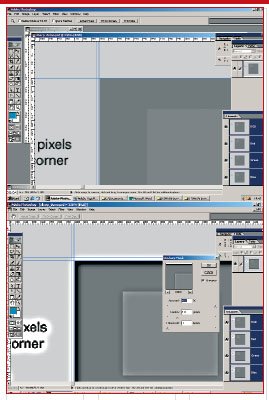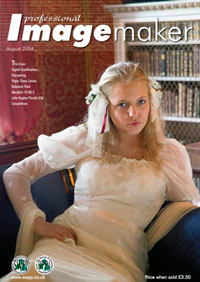articles/Photoshop/sharpening-page1
Sharpening in Photoshop - part 1 of 1 2
by Mike McNamee Published 01/08/2004

Two issues have come to the forefront in this magazine, both at the instigation of Terry Hansen, our Chairman of Qualifications. As well as the incorrect use of fill flash, Terry has also become concerned about the misuse (or lack of ) sharpening and asked for a revision article for you all!
The business of sharpening can get very complex and it would be easy to drift off into the realms of mathematics but seeing how this is p4b we will stick mainly to Unsharp Masking. First of all though let's set out a few rules:
Rule 1
Sharpening is an intrinsic part of digitizing an image and should not be regarded as a sticking plaster to cover a flaw. It is not a flaw; all digital images have to be sharpened at some stage of their creation.
Rule 2
Do not look to sharpening to recover poor craftsmanship in your image shooting. If your images are fuzzy, look to your technique, your eyesight and your optics! All the rules of conventional photography apply, tripods are sharper than hand holding, flash is sharper than ambient, prime lenses are sharper than zoom lenses, Nikkors are sharper than Chinese copies - it's the laws of physics, you can't beat them!

Rule 3
Do it once and do it last i.e. sharpen a montage at the end not on individual images. Resharpening a JPEG image after the camera has also had a go at it can really degrade some images.
Rule 4 Do not be seduced by claims for miracle sharpening methods such as single channel, Lightness channel, High Pass Filter sharpening. They are good, they are better but they are refinements not rescue methods! Unsharp Masking Unsharp masking in the digital environment is very similar to the use of dilute developers in monochrome silver photography. In this conventional image making, the use of very dilute developer causes localised chemical exhaustion in the vicinity of boundaries between very light and very dark parts of the negative. This causes an enhancement of the boundary delineation by means of the Mackie Line. The effect is also known as Acutance and has led to the formulation of a number of high definition developers, which actively exploit the phenomenon. In digital imaging the computer seeks out boundaries with tonal differences and alters the pixels in the boundary area to enhance the apparent sharpness of the final image. The sophisticated abilities of modern computing allow far more control than that which is available with silver emulsions. In Photoshop there are a number of alternatives in the "Filter>Sharpen" menu; ignore the others at least in your early career!
There are three variables in the Un-sharp masking dialogue box
Amount:
Amount determines the emphasis placed on lightening and darkening lines along either side of detected edges i.e. how much lighter the light side is made and how much darker the dark side is made.
Radius:
Radius determines the width of the sharpening lines
Threshold:
Threshold determines where the sharpening will take place, e.g. at places where there are large or small differences in tonal value. For grainy scans a low threshold will result in sharpening of the individual grains. At very high threshold values (i.e. approaching 255) no sharpening at all will occur.
The following are recommendations for the setting that should be employed in various circumstances. Experience and observation might well dictate other setting for optimum sharpening of an image, but they are prepress rules of thumb and have stood the test of time.
Amount
For normal useable resolutions use 80% to 120%
Radius
0.6 pixels at 150 ppi
1 pixel at 300ppi
1.2 pixels at 350 ppi
1.5 pixels at 400 ppi
for fine textures and digital images use a 1 pixel setting
Threshold
5 x 4 4000 x 5000 pixel set "0"
35mm 4000 x 5000 pixel set at "3"
Digital Cameras set at "0", (no grain)
NOTE:
It is considered by many experienced uses of Photoshop that sharpening should be applied in repeated smaller doses. For example if 100% is determined to be the correct total amount, a superior result will result will be obtained by the application of 25% four times.
You are currently on page 1 Contact Mike McNamee
1st Published 01/08/2004
last update 09/12/2022 14:58:52
More Photoshop Articles
There are 0 days to get ready for The Society of Photographers Convention and Trade Show at The Novotel London West, Hammersmith ...
which starts on Wednesday 15th January 2025





